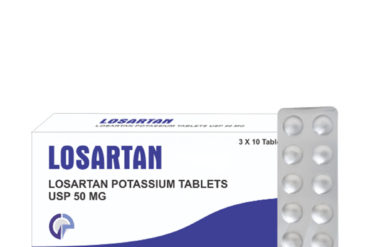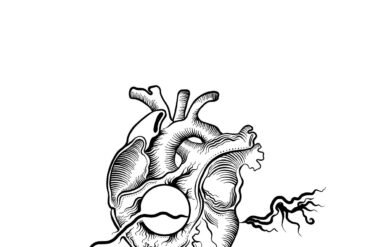Holistic Approaches to Pain Management: Mind-Body Connection

Table of Contents
- Introduction to Holistic Pain Management
- Understanding the Mind
- Body Connection
- Integrating Traditional and Alternative Therapies
- Lifestyle Changes for Pain Relief
- The Importance of Emotional Well
- being
Introduction to Holistic Pain Management
When it comes to managing pain, a holistic approach that considers the mind-body connection can offer comprehensive and effective solutions. Holistic pain management recognizes that pain is not just a physical sensation but is also influenced by our emotions, thoughts, and overall well-being. By addressing pain from multiple perspectives, holistic approaches aim to provide long-lasting relief and improve the overall quality of life for individuals experiencing chronic or acute pain.
Traditional pain management often focuses solely on alleviating physical symptoms through medications or procedures. However, this one-dimensional approach may not always address the root causes of pain or take into account the psychological and emotional factors that can amplify it.
Holistic pain management emphasizes the importance of uniting the mind and body in the healing process. It recognizes the intricate relationship between our mental and physical well-being and how one can significantly impact the other. By integrating various modalities like meditation, relaxation techniques, and counseling, holistic approaches address pain from a broader perspective.
One of the key principles of holistic pain management is empowering individuals to take an active role in their own healing. Instead of relying solely on healthcare providers, individuals are encouraged to develop self-care practices that support their well-being on a daily basis. This can include adopting healthy lifestyle habits, incorporating movement and exercise, practicing mindfulness, and engaging in activities that bring joy and fulfillment.
Additionally, holistic pain management recognizes the interconnectedness of the body systems and seeks to restore balance and harmony. It explores alternative therapies such as acupuncture, massage, chiropractic care, and herbal medicine, which can complement traditional medical treatments and provide additional pain relief.
By considering the mind-body connection and addressing the underlying causes of pain, holistic approaches to pain management aim to provide a more holistic and sustainable solution. These approaches not only focus on symptom management but also strive to enhance overall well-being and promote healing from within. With their emphasis on self-care, individual empowerment, and a comprehensive approach, holistic pain management can offer hope and relief for those living with chronic pain.
- Recognizes pain as a multi-dimensional experience
- Addresses the mind-body connection
- Encourages active participation in healing
- Promotes balance and harmony within the body
- Complements traditional medical treatments
- Focuses on overall well-being and self-care
The mind-body connection plays a crucial role in holistic approaches to pain management. By understanding the mind and its influence on physical well-being, we can unlock powerful techniques that promote healing and alleviate pain. Here are key insights into the mind’s role in pain management:
1. Perception and Pain:
– Perception greatly influences the experience of pain. Our thoughts, beliefs, and emotions can amplify or minimize pain sensations.
– Negative emotions, such as stress, anxiety, and depression, can worsen pain perception.
– By cultivating positive emotions, practicing relaxation techniques, and adopting a mindful attitude, we can change our perception and reduce pain intensity.
2. The Role of Stress:
– Chronic stress generates physiological changes that affect pain thresholds.
– Stress activates the body’s “fight-or-flight” response, releasing stress hormones that increase pain sensitivity.
– Holistic approaches aim to manage stress through various practices like meditation, deep breathing exercises, and progressive muscle relaxation.
3. Cognitive-Behavioral Techniques:
– Cognitive-behavioral therapy (CBT) is a widely-used approach that targets the mind to manage pain.
– By identifying and challenging negative thoughts about pain, individuals can reframe their beliefs and reduce the impact of pain on their lives.
– CBT incorporates relaxation techniques, problem-solving skills, and goal-setting strategies to empower individuals in coping with pain.
4. Mindfulness and Meditation:
– The practice of mindfulness involves paying non-judgmental attention to the present moment.
– Mindfulness meditation has been found to effectively reduce pain symptoms and enhance overall well-being.
– Regular meditation practice can alter brain activity, leading to improved pain tolerance and emotional regulation.
5. Visualization and Guided Imagery:
– Visualization exercises harness the power of the mind to create mental images that promote relaxation and alleviate pain.
– Guided imagery techniques encourage individuals to create vivid, positive mental scenarios that distract from pain sensations.
– These techniques engage the mind’s innate ability to influence physical experiences, serving as valuable tools for pain management.
Understanding the mind-body connection is paramount in holistic approaches to pain management. By harnessing the power of the mind, individuals can reshape their pain experience, alleviate suffering, and enhance overall well-being. Integrating practices like mindfulness, meditation, cognitive-behavioral techniques, and visualization can empower individuals to take an active role in their healing journey and find lasting relief from pain.
Body Connection
The body and mind are interconnected, and this relationship plays a crucial role in how we experience and manage pain. Understanding this mind-body connection is integral to holistic approaches to pain management.
When we experience pain, such as a headache or a muscle ache, it is not solely physical. Our thoughts, emotions, and stress levels can influence the intensity and duration of the pain. The mind and body work together to form a complex system that impacts our overall well-being.
Research has shown that stress and negative emotions can exacerbate pain. For example, if you are feeling anxious or depressed, you may perceive pain as more severe than it actually is. On the other hand, positive emotions and relaxation techniques can help alleviate pain and promote overall well-being.
Here are some ways to enhance the body connection for pain management:
- Mindfulness and Meditation: Practicing mindfulness and meditation can help you develop a greater awareness of your body and its sensations. This can assist in identifying areas of pain and tension, allowing you to release them and promote relaxation.
- Breathing Techniques: Deep breathing exercises can help calm the mind and relax the body. By focusing on your breath, you can reduce stress and divert attention away from pain.
- Yoga and Tai Chi: These practices combine physical movements, breath control, and meditation. Regular practice enhances flexibility, promotes relaxation, and improves overall well-being, which can alleviate pain.
- Visualization: By using your imagination, you can create positive mental images that replace pain with feelings of comfort and relief. Visualization exercises can enhance relaxation, decrease pain perception, and promote healing.
- Healthy Lifestyle: Maintaining a balanced diet, engaging in regular exercise, staying hydrated, and getting enough quality sleep all contribute to a healthy mind-body connection. These lifestyle choices can help reduce inflammation, improve mood, and manage pain more effectively.
By integrating these holistic approaches into your pain management routine, you can tap into the mind-body connection and unlock the potential for healing and overall well-being. It is important to remember that pain is subjective, and what works for one individual may not work for another. Finding the right combination of techniques that resonate with your body and mind is key to achieving optimal pain management results.
Integrating Traditional and Alternative Therapies
In today’s world, holistic approaches to pain management have gained popularity as individuals seek natural and comprehensive strategies to address their pain. The mind-body connection is a fundamental element of these holistic approaches, as it recognizes the intricate interplay between our mental and physical well-being. By integrating traditional and alternative therapies, individuals can experience a more comprehensive and enhanced pain management plan that addresses the root causes of their discomfort.
Integrating both traditional and alternative therapies allows individuals to access a wider range of treatment options tailored to their unique needs. While traditional therapies like medication, physical therapy, and surgery may provide immediate relief, they often focus solely on symptom management. Alternative therapies, on the other hand, take a more holistic approach, targeting the underlying causes of pain rather than just the symptoms.
Here are some key benefits that arise from integrating traditional and alternative therapies:
- Complementary Approaches: Traditional and alternative therapies can complement each other, addressing different aspects of pain and working synergistically to provide comprehensive relief. For example, acupuncture or chiropractic care can be combined with pain medications or physical therapy to enhance the overall effectiveness of the treatment.
- Expanded Treatment Options: By incorporating various therapies into a pain management plan, individuals have access to a broader range of treatments to choose from, ensuring a customized approach that considers their preferences, needs, and unique medical conditions.
- Reduced Reliance on Medications: Integrating alternative therapies can help individuals reduce their dependence on pain medications, which often come with potential side effects and the risk of addiction. Techniques such as mindfulness meditation, yoga, or herbal remedies can offer effective pain relief with fewer or no side effects.
- Improved Overall Well-being: Holistic approaches emphasize not only pain relief but also promoting overall well-being. By integrating therapies like stress management techniques, nutrition counseling, or massage therapy, individuals can enhance their mental and physical health while addressing pain, leading to improved quality of life.
In conclusion, the integration of traditional and alternative therapies holds immense potential in providing comprehensive pain management solutions. By acknowledging the mind-body connection and incorporating various treatment modalities, individuals can benefit from a more holistic, personalized, and effective approach to managing their pain.
Lifestyle Changes for Pain Relief
When it comes to managing pain, simple lifestyle changes can make a significant difference. By adopting a holistic approach that emphasizes the mind-body connection, you can reduce pain levels and improve your overall well-being. Here are some lifestyle changes that may help alleviate pain:
- 1. Exercise regularly: Engaging in low-impact exercises like swimming, yoga, or walking can strengthen muscles, increase flexibility, and release endorphins, which are natural pain-relieving chemicals.
- 2. Practice relaxation techniques: Techniques like deep breathing exercises, meditation, and progressive muscle relaxation can help reduce muscle tension and promote a sense of calm, ultimately reducing pain levels.
- 3. Maintain a healthy diet: Consuming a balanced diet that includes fruits, vegetables, whole grains, and lean proteins can help control inflammation, manage weight, and reduce pain associated with conditions such as arthritis.
- 4. Get enough sleep: Adequate sleep is crucial for pain management. Establish a consistent sleep schedule, create a relaxing bedtime routine, and make your sleeping environment conducive to restful sleep.
- 5. Manage stress levels: Chronic stress can exacerbate pain. Engage in stress-reducing activities like listening to music, practicing mindfulness, or spending time in nature to help alleviate pain.
- 6. Avoid smoking and limit alcohol consumption: Smoking can worsen chronic pain conditions while alcohol can interfere with sleep quality and overall health. Minimizing or eliminating these habits can contribute to pain relief.
- 7. Seek emotional support: Connect with supportive friends, family, or therapy groups to share your experiences and emotions. Emotional support can provide a sense of belonging and reduce the impact of pain.
- 8. Incorporate alternative therapies: Consider complementary approaches such as acupuncture, massage therapy, or chiropractic care. These therapies can stimulate the body’s healing abilities and reduce pain naturally.
Remember, everyone’s pain management journey is unique, and finding the right lifestyle changes may require some experimentation. It’s advisable to consult with a healthcare professional or pain management specialist to develop an individualized plan that aligns with your specific needs and conditions.
The Importance of Emotional Well-being in Holistic Pain Management
When it comes to managing pain holistically, the mind-body connection plays a crucial role. Pain is not only a physical sensation but also an emotional experience. Addressing emotional well-being alongside physical discomfort is essential for effective pain management. Here’s why focusing on emotional well-being is vital:
- Reduced stress: Emotional distress and stress can exacerbate pain levels. Engaging in activities that promote emotional well-being, such as meditation, deep breathing exercises, or journaling, can help reduce stress and subsequently alleviate pain.
- Enhanced coping mechanisms: Chronic pain can be debilitating and constantly challenging. Emotional well-being helps individuals develop effective coping mechanisms, reducing feelings of helplessness and improving overall pain management strategies. Techniques like visualization and positive affirmations can offer mental and emotional support.
- Improved quality of life: Pain can greatly impact an individual’s quality of life. By nurturing emotional well-being, individuals can find joy, purpose, and meaning outside of their pain, leading to an improved overall quality of life.
- Facilitates healing: Emotional well-being contributes to the body’s healing process. Positive emotions and a calm mind aid in the release of endorphins, which act as natural pain relievers. A relaxed state of mind can enhance the body’s ability to heal, promoting physical and emotional well-being simultaneously.
- Prevents the development of emotional trauma: Long-term pain can lead to emotional trauma, causing anxiety, depression, or a negative outlook on life. By addressing emotional well-being, individuals can prevent or minimize the development of such traumas, reducing their impact on mental health.
To truly embrace holistic pain management, it is crucial to treat the whole person and acknowledge the intricate connection between the mind and body. By prioritizing emotional well-being alongside physical well-being, individuals can find comprehensive relief from pain and improve their overall quality of life.
Holistic Approaches to Pain Management: Mind-Body Connection
In today’s fast-paced and stressful world, chronic pain has become a pervasive issue affecting millions of people worldwide. Traditional methods of pain management often revolve around pharmaceutical interventions, which may only provide temporary relief and come with potential side effects. As a result, many individuals are seeking alternative, holistic approaches to pain management that address the root causes of pain rather than just the symptoms.
One such approach is the mind-body connection, emphasizing the powerful interplay between our thoughts, emotions, and physical well-being. By recognizing the influence of psychological and emotional factors on pain perception, individuals can tap into their innate ability to alleviate pain and promote healing. Here are some holistic techniques that can be incorporated into a pain management regimen:
- Meditation and Mindfulness: These practices involve quieting the mind and focusing on the present moment. Studies have shown that regular meditation reduces pain intensity, enhances pain coping mechanisms, and improves overall well-being.
- Yoga and Tai Chi: These gentle movement practices combine physical postures, deep breathing, and meditation. They can help improve flexibility, reduce muscle tension, and promote relaxation, thereby alleviating chronic pain.
- Biofeedback: This technique enables individuals to gain voluntary control over physiological processes such as heart rate, blood pressure, and muscle tension. By learning to regulate these responses, individuals can effectively manage pain.
- Hypnotherapy: Through guided relaxation and heightened focus, hypnotherapy can help individuals access their subconscious mind to reframe pain perception and promote healing. It can be particularly effective for managing chronic pain conditions.
- Acupuncture: This ancient Chinese practice involves the insertion of thin needles at specific points on the body to stimulate energy flow and restore balance. Acupuncture has been shown to reduce pain and inflammation, making it a valuable holistic tool for pain management.
It is important to note that holistic approaches to pain management should not replace conventional medical care but rather complement it. Consultation with healthcare professionals well-versed in holistic therapies can provide valuable guidance and personalized treatment plans.
By embracing the mind-body connection and incorporating holistic techniques into their lives, individuals can take an active role in managing their pain and improving overall well-being. Through these practices, it may be possible to not only alleviate pain but also cultivate a deeper understanding of oneself, leading to a more harmonious and balanced life.


























